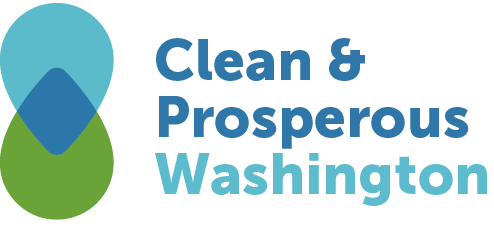Green Energy Superpower… in Centralia!
On Monday we highlighted the Sila Nanotechnologies announcement of plans to open a hydro powered operation in Moses Lake to produce advanced lithium-ion anode battery materials for electric vehicles. On Wednesday we highlighted the announcement by Woodinville’s lithium-silicon battery manufacturer Group14 Technologies of new Series C funding that will bankroll construction of another factory in central Washington.
In another “power-ful” clean energy announcement, yesterday Australia’s Fortescue Future Industries unveiled plans to invest as much as $600 million in a new green hydrogen production facility at the site of a reclaimed coal mine near Centralia, the Industrial Park at TransAlta (IPAT).
Speaking at the Economic Alliance of Lewis County Hydrogen Symposium, Chairman and Founder of FFI Dr Andrew Forrest said, “FFI’s goal is to turn North America into a leading global green energy heartland and create thousands of green jobs now and more in the future. Repurposing existing fossil fuel infrastructure to create green hydrogen to power the world is part of the solution to saving the planet.”
According to Mining Connection, the Centralia facility is “rumored to be targeting production of 110 tonnes of green hydrogen a day from the plant, equal to 40,000 tonnes per year”.1
The zero-emissions fuel produced will find markets in manufacturing, heavy machinery, and ships. Importantly, this project will strengthen Washington state’s application for a Department of Energy-funded H2Hub.
Australia’s Fortescue selected the state of Washington for its first United States project, in part because of a public policy landscape and an economy that are well-aligned with their clean energy aspirations. The Centralia location is especially appealing because of the I-5 transit corridor, and with a new industrial park designated by the Washington State Legislature that will repurpose areas of the decommissioned Transalta surface mine.
Lewis County aims to attract industry, support research facilities, and develop local clean energy projects with the opening later this year of its Energy Innovation Center. It will pursue federal and state grants to jumpstart large-scale, high-impact renewable energy development like the one announced yesterday by Fortescue.
Richard DeBolt, Executive Director of the Lewis Economic Alliance said, “With the closing of the coal mine and the scheduled retirement of the Centralia coal-fired power plant, IPAT was formed to redevelop the site and attract investment that will support well-paid, long-term employment opportunities in the region. FFI’s potential project represents the opportunity to do just that.”
Fortescue’s CEO, Dr. Andrew Forrest, wrote in their annual report: “Through Fortescue Future Industries, we are standing up a global green energy and green materials industry, with a pioneering target to achieve carbon neutrality by 2030. We are focusing our efforts on renewable green hydrogen, because any other kind of hydrogen – as a recent study by researchers at Stanford and Cornell University confirmed – is a distraction.
Eleanor Roosevelt once wrote, “We cannot any longer take an old approach to world problems. They aren’t the same problems. It isn’t the same world.”
The geography of the global energy trade is being redrawn. Political climates and societies are shifting to net zero, at speed. These changes represent an enormous opportunity – but only to those that can move quickly and confidently. To thrive, Fortescue must, as it has always done, embrace rather than fear change.”
Fortescue’s Forrest was profiled by the New York Times: Can a Carbon-Emitting Iron Ore Tycoon Save the Planet?
“Andrew has three things going for him,” said Malcolm Turnbull, a former Australian prime minister, who has known Dr. Forrest for 25 years and recently teamed up with him to support green hydrogen. “One, he’s passionately committed to the energy transformation. Two, he’s got enormous financial resources. More than a few people can tick those boxes, but the third box is that he is the founder and chairman of a company that has engineering and construction in its DNA.”
(That engineering innovation DNA shows up in a wide variety of projects, including this one at Fortescue’s Australia mining operation, the “Infinity Train”.)
With this Fortescue Future Industries green hydrogen production facility in Lewis County, the Sila Nanotechnologies battery factory in Moses Lake, and Group14’s planned battery factory also in Moses Lake, clean energy is driving economic vitality in rural Washington, and moving our state forward as a green energy superpower.
- In the original article, we wrote that the plant would produce 15 million tons of green hydrogen per year. This figure has since been corrected.
